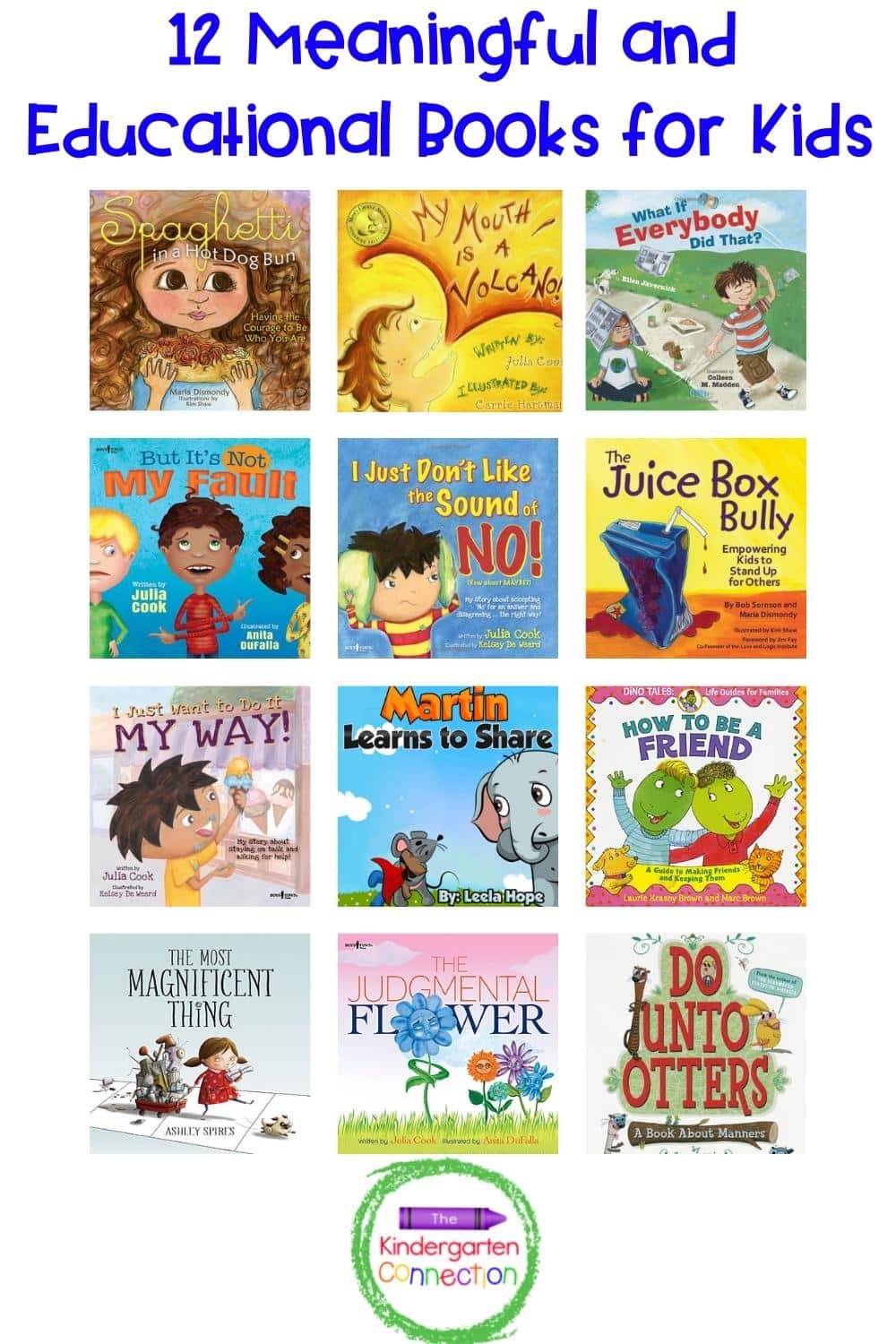How to Talk to Kids About Difficult Topics: A Complete Parent's Guide
Master the art of communicating challenging subjects with children through storytelling, empathy, and age-appropriate strategies

As parents and caregivers, one of our most challenging yet crucial responsibilities is having difficult conversations with our children. Whether discussing loss, illness, family changes, world events, or personal struggles, these conversations shape how our children understand and navigate the complexities of life. The key lies not in avoiding these topics, but in approaching them with wisdom, empathy, and age-appropriate strategies.
Throughout history, children stories, bedtime stories, and moral stories have served as powerful tools for addressing life's challenges. From ancient fables to modern educational stories, storytelling provides a safe, accessible way to explore difficult themes while offering comfort and understanding.
Key Insight
Research shows that children who receive age-appropriate, honest communication about difficult topics develop better emotional resilience, stronger family bonds, and healthier coping mechanisms throughout their lives.
Understanding Child Development and Communication Readiness

Before diving into difficult conversations, it's essential to understand your child's developmental stage and communication abilities. Children process information differently at various ages, and what works for a preschooler may not be appropriate for a teenager.
Toddlers and Preschoolers (Ages 2-5)
At this stage, children think concretely and have limited abstract reasoning abilities. They benefit most from simple explanations, picture books, and short stories for kids that address their immediate concerns. Toddler stories with clear moral lessons work exceptionally well because they provide concrete examples of behavior and consequences.
Young children often process difficult information through play and repetition. They may ask the same questions multiple times as they work through new concepts. Interactive stories and imaginative stories allow them to explore scenarios safely while maintaining emotional distance from real-world complexities.
Story Example for Preschoolers
When discussing the death of a pet, you might share a gentle story about a little rabbit who lived a happy life in a garden, played with friends, and when it was time to say goodbye, became a special star watching over the garden. This approach uses fantasy stories elements while addressing the reality of loss in an age-appropriate way.
School-Age Children (Ages 6-12)
School-age children can handle more complex information and benefit from detailed explanations. They're developing logical thinking skills and can understand cause-and-effect relationships. This is an ideal time to introduce classic tales and adventure stories that explore themes of courage, perseverance, and moral decision-making.
Educational stories become particularly valuable at this stage, as children can connect story lessons to real-life situations. They're also developing empathy and can understand how their actions affect others, making moral stories especially impactful.
Teenagers (Ages 13+)
Adolescents can engage in abstract thinking and appreciate nuanced discussions about complex topics. While they may seem less interested in traditional children stories, they often respond well to stories that reflect their own experiences and challenges. Young adult literature and real-life stories can serve as powerful conversation starters.
The Power of Storytelling in Difficult Conversations

Stories have been humanity's primary method of transmitting wisdom, values, and life lessons across generations. When facing difficult conversations with children, storytelling offers several unique advantages that direct discussion alone cannot provide.
Creating Emotional Safety
Stories create a protective buffer between children and potentially overwhelming emotions. When we share heartwarming tales or magical stories that address difficult themes, children can explore these concepts without feeling directly threatened or overwhelmed.
The familiar ritual of storytime itself provides comfort and security. Whether it's during bedtime stories or quiet afternoon reading sessions, this routine creates a safe space where children feel protected and loved, making them more receptive to processing challenging information.
The Science Behind Story-Based Learning
Neuroscience research reveals that when children hear stories, multiple areas of their brain activate simultaneously - not just language centers, but also sensory and emotional processing regions. This comprehensive brain engagement helps children:
- Better retain important information and lessons
- Develop empathy by experiencing different perspectives
- Process emotions in a safe, controlled environment
- Build mental frameworks for understanding complex situations
Building Empathy and Understanding
Animal stories and fairy tales often feature characters facing challenges similar to what children might experience. When a brave little mouse overcomes fear to help a friend, or when a kind-hearted character makes difficult but right choices, children learn valuable lessons about courage, friendship, and moral behavior.
These narratives allow children to "practice" emotional responses and problem-solving in a low-stakes environment. They can explore questions like "What would I do in this situation?" or "How would I feel if this happened to me?" without real-world consequences.
Providing Hope and Resilience
Most children's stories, even those addressing difficult topics, conclude with hope, resolution, or growth. This narrative structure teaches children that challenges can be overcome, that help is available, and that difficult times don't last forever. Adventure stories particularly excel at demonstrating how characters develop strength and wisdom through overcoming obstacles.
Age-Appropriate Communication Strategies

Effective communication about difficult topics requires tailoring your approach to your child's developmental stage, personality, and specific needs. Here's how to adapt your strategies across different age groups while incorporating learning through stories techniques.
Strategies for Early Childhood (Ages 2-6)
Use Simple, Concrete Language
Young children understand best when concepts are explained in simple, concrete terms they can relate to their own experiences. Instead of abstract explanations about death, you might say, "Grandpa's body stopped working, like when a car runs out of gas and can't drive anymore."
Incorporate Visual Aids and Picture Books
Illustrated books serve as powerful tools for young children who are still developing language skills. The combination of images and simple text helps them process complex emotions and situations. Look for books that address your specific topic while maintaining age-appropriate content.
Recommended Approach: The "Story Bridge" Method
Start with a familiar fairy tale or nursery rhyme, then create connections to the real situation. For example, if discussing a family move, you might begin with "The Three Little Pigs" and discuss how the pigs needed to find new homes, just like your family is finding a new home.
This approach uses familiar narrative structures to introduce unfamiliar concepts, making the conversation feel safer and more manageable for young children.
Create Routine and Predictability
Difficult conversations work best when embedded in familiar routines. Bedtime stories provide an ideal opportunity because children are relaxed, focused on you, and the quiet environment promotes deeper processing. The routine itself provides comfort even when discussing challenging topics.
Strategies for School-Age Children (Ages 7-12)
Encourage Questions and Curiosity
School-age children are naturally curious and can handle more detailed explanations. Encourage them to ask questions, and don't worry if you don't have all the answers. Saying "That's a really thoughtful question. Let me think about that" or "I don't know everything about this, but here's what I do know" models honesty and critical thinking.
Use Educational Stories and Real-Life Examples
Children this age can connect fictional situations to real-life applications. Classic tales like "The Boy Who Cried Wolf" can lead to discussions about honesty and consequences, while modern educational stories might address topics like bullying, divorce, or environmental concerns.
Develop Problem-Solving Skills
Rather than simply explaining difficult situations, involve children in thinking through solutions. Adventure stories provide excellent models for problem-solving, showing characters who face challenges, consider options, and take action. Ask questions like "What do you think the character should do?" or "How might we handle a similar situation?"
Strategies for Adolescents (Ages 13+)
Respect Their Growing Independence
Teenagers appreciate being treated as emerging adults. While they may resist traditional children stories, they often respond well to young adult literature, documentaries, or real-life stories that address complex themes with sophistication and nuance.
Create Opportunities for Dialogue
Formal sit-down conversations may feel awkward to teenagers. Instead, create natural opportunities for discussion during car rides, walks, or shared activities. Sometimes the most meaningful conversations happen when you're engaged in something together rather than facing each other directly.
Universal Communication Tips
- Listen more than you speak - children often reveal important insights when given space to express themselves
- Validate their emotions - "It's normal to feel scared/sad/confused about this"
- Be honest about your own limitations - "I'm still learning about this too"
- Follow their lead - let children guide the depth and pace of the conversation
- Check for understanding - ask them to explain back what they've learned
Using Stories to Address Specific Difficult Topics

Different challenging topics require tailored approaches, and the right story can make all the difference in helping children understand and process difficult information. Here's how to use various types of stories for specific situations.
Death and Loss
Death is often the first major difficult topic parents must address with children. The key is providing honest, age-appropriate information while offering comfort and hope.
For Younger Children (Ages 3-7)
Use gentle animal stories or magical stories that address the cycle of life. Stories about seasons changing, flowers blooming and going to sleep, or beloved animal characters who live on in memory can help children understand that death is a natural part of life.
Sample Story Approach: "The Memory Tree"
Create a story about a beautiful old tree in a forest that provided shade and homes for many animals. When the tree became very old and could no longer grow, it peacefully went to sleep. But all the seeds it had dropped over the years grew into new trees, and the animals never forgot how kind and protective it had been. Now they visit the spot where it stood and remember all the good times they shared.
For School-Age Children (Ages 8-12)
Classic tales and more complex narratives can address grief, remembrance, and the continuity of love even after death. Stories that show characters processing loss, maintaining memories of loved ones, and finding ways to honor those who have died provide valuable models for children's own grief journey.
Divorce and Family Changes
Family restructuring creates uncertainty and emotional turmoil for children. Stories can help normalize these changes while reassuring children of their parents' continued love.
Using Adventure Stories as Metaphors
Frame family changes as new adventures rather than losses. Stories about characters who must navigate new territories, make new homes, or adapt to different circumstances can help children see change as an opportunity for growth rather than just a source of fear.
Emphasizing Constant Love
Create or find heartwarming tales that emphasize how love remains constant even when living situations change. Stories about parent animals who care for their young in different ways, or about families who show love in various forms, can reassure children that divorce doesn't mean less love.
Illness and Medical Challenges
When children or family members face illness, stories can help explain medical procedures, normalize feelings of fear or sadness, and provide hope.
Educational Stories About the Body
Age-appropriate stories that explain how the body works can demystify illness and medical treatment. For younger children, stories about brave white blood cells fighting germs, or about how medicine helps the body get stronger, can make abstract concepts concrete and less frightening.
Stories of Courage and Resilience
Adventure stories featuring characters who face challenges with bravery can inspire children dealing with illness. These stories don't minimize the difficulty of the situation but instead celebrate courage, determination, and the support of loving communities.
World Events and Social Issues
Natural disasters, violence, social injustice, and other world events can be overwhelming for children. Stories provide a way to address these topics while maintaining hope and age-appropriate boundaries.
Historical Fables and Moral Stories
Traditional stories have addressed human challenges for centuries. Fables about communities working together during difficult times, or moral stories about characters who stand up for what's right, can provide frameworks for understanding current events.
Helper Stories
As Mr. Rogers famously advised, encourage children to "look for the helpers" in any difficult situation. Stories that highlight heroes, community support, and people who work to make things better can shift focus from fear to hope and action.
Building Resilience Through Story Selection
When choosing stories to address difficult topics, look for narratives that:
- Acknowledge real challenges without overwhelming young listeners
- Feature characters who demonstrate healthy coping strategies
- Show the importance of community, family, and friendship support
- End with hope, resolution, or positive growth
- Encourage questions and further discussion
Building Emotional Intelligence Through Stories

Emotional intelligence - the ability to recognize, understand, and manage emotions in ourselves and others - is one of the most valuable skills we can help children develop. Kids stories provide an excellent vehicle for building these crucial abilities while addressing difficult topics in age-appropriate ways.
Teaching Emotion Recognition
Many children struggle to identify and name their emotions, especially during challenging situations. Picture books and illustrated books excel at showing facial expressions, body language, and emotional responses that help children recognize feelings in themselves and others.
Using Interactive Stories for Emotion Learning
Engage children actively in identifying emotions within stories. Ask questions like "How do you think the character feels right now?" or "What do you notice about their face that tells you they're sad?" This practice helps children develop the vocabulary and awareness needed to express their own emotions.
Emotion-Building Story Activity
Create personalized short stories for kids featuring your child as the main character facing age-appropriate challenges. For example: "Sarah felt worried when she started at a new school. Her tummy felt funny, and her hands were sweaty. But when the teacher smiled and showed her to a desk next to Jamie, who offered to share crayons, Sarah's worry started to shrink."
This approach helps children see how emotions change, how others can help, and how they might handle similar situations.
Developing Empathy Through Character Connections
Animal stories and fantasy stories often feature characters facing various emotional challenges. When children connect with these characters, they practice empathy - understanding and sharing the feelings of others.
Multi-Perspective Storytelling
Encourage children to consider different viewpoints within stories. After reading about a conflict between characters, ask "How do you think each character felt?" or "Why might they have acted that way?" This practice builds understanding that people can have different but valid emotional responses to the same situation.
Teaching Emotional Regulation Strategies
Stories can model healthy ways to handle strong emotions. Look for moral stories and educational stories that show characters using effective coping strategies like deep breathing, talking to trusted adults, taking breaks, or engaging in calming activities.
Creating Coping Strategy Stories
Develop personalized stories that teach specific coping techniques. For instance, a story about a little bear who learns to count to ten when feeling angry, or a bird who finds a quiet tree branch when feeling overwhelmed. These concrete examples give children specific tools they can remember and use in real situations.
Emotion Coaching Through Stories
Use the following steps when discussing emotions in stories:
- Notice: Help children identify emotions in characters
- Name: Provide accurate emotion words to expand vocabulary
- Normalize: Reassure children that all emotions are natural and acceptable
- Navigate: Discuss healthy ways to express and manage emotions
- Connect: Help children relate story lessons to their own experiences
Creating Safe Spaces for Difficult Conversations
The environment in which you have difficult conversations with children significantly impacts their receptiveness and emotional safety. Creating the right atmosphere involves both physical and emotional considerations that help children feel secure enough to explore challenging topics.
Physical Environment Considerations
The Power of Storytime Settings
Traditional bedtime stories occur in naturally comforting environments - dim lighting, comfortable seating, and the security of routine. These elements aren't just coincidental; they create optimal conditions for processing emotional information. The quiet, intimate setting of story time signals to children that they're in a safe space where they can be vulnerable.
Choosing the Right Time and Place
Avoid having difficult conversations during stressful times or in distracting environments. Instead, choose moments when children are relaxed and have your full attention. Many families find that car rides, walks in nature, or quiet evening times work well because they're free from typical household distractions.
Creating Your Family's Story Corner
Establish a special place in your home dedicated to reading and meaningful conversations. This might be a cozy corner with soft cushions, good lighting for reading, and easy access to your collection of children stories and picture books.
Having a designated space signals to children that story time and the conversations that follow are important family activities worthy of special attention and care.
Emotional Safety Guidelines
Establishing Trust and Openness
Children need to know that their thoughts and feelings will be respected and that they won't be judged for their questions or reactions. Begin difficult conversations by reassuring children that all feelings are acceptable and that you're available to help them understand confusing or scary topics.
Following the Child's Lead
Pay attention to verbal and non-verbal cues that indicate when a child has heard enough or needs a break. Some children process information quickly and want to dive deep into discussions, while others need time to absorb small pieces of information. Respect these individual differences and allow conversations to unfold naturally.
Using Stories as Emotional Buffers
When topics feel too overwhelming for direct discussion, stories provide emotional distance that makes processing possible. Fables, fairy tales, and imaginative stories allow children to explore difficult themes without feeling personally threatened. They can discuss how story characters feel and what they might do without the pressure of immediately applying lessons to their own lives.
Building Communication Rituals
Regular Story and Discussion Times
Don't reserve storytelling only for crisis situations. Regular reading and discussion times create ongoing opportunities for children to process experiences, ask questions, and build communication skills. When difficult topics arise, they'll already have established patterns for thoughtful conversation.
"Wonder Questions" and Open Dialogue
Encourage curiosity by asking open-ended questions about stories and life experiences. "I wonder what you think about..." or "What do you notice about..." invitations create space for children to share their thoughts without pressure to provide "correct" answers.
Signs of a Safe Communication Environment
You'll know you've created emotional safety when children:
- Ask questions freely without fear of judgment
- Share their worries and concerns openly
- Express disagreement or confusion without becoming defensive
- Return to topics over time as they process information
- Seek you out when they encounter related situations or information
Practical Tools and Resources for Difficult Conversations

Having the right resources at your fingertips makes difficult conversations more manageable and effective. This comprehensive toolkit includes story suggestions, conversation starters, and practical strategies you can adapt for your family's specific needs.
Building Your Family Story Library
Essential Categories for Difficult Topics
A well-rounded collection should include various types of stories to address different challenges and age groups. Consider including classic tales for timeless wisdom, modern educational stories for contemporary issues, multicultural stories for diverse perspectives, and interactive stories that engage children actively in the learning process.
For Younger Children (Ages 2-6)
- Picture books with simple text and expressive illustrations
- Animal stories that address feelings and friendship
- Fairy tales with gentle lessons about kindness and courage
- Nursery rhymes and magical stories for comfort
- Toddler stories about daily challenges and emotions
For School-Age Children (Ages 7-12)
- Adventure stories featuring problem-solving heroes
- Moral stories that explore ethical dilemmas
- Educational stories about real-world issues
- Early reader books children can enjoy independently
- Chapter books that develop deeper themes over time
Digital and Traditional Resources
While physical books remain valuable for their tactile experience and lack of digital distractions, don't overlook digital resources. Audio books, interactive e-books, and educational apps can supplement your story collection, especially for children who learn better through different modalities.
Conversation Starter Techniques
"What If" Scenarios
Use hypothetical situations inspired by adventure stories or fantasy stories to explore difficult topics indirectly. "What if you were the character in this story? How would you feel? What would you do?" This approach allows children to practice problem-solving and emotional processing in a safe, imaginary context.
Story Extensions
After reading a story that touches on difficult themes, extend the narrative with questions about what might happen next. "I wonder what the character learned from this experience?" or "How do you think this story changed the character?" These extensions help children process lessons and apply them to their own situations.
Sample Conversation Starters by Topic
For discussing change: "Remember how the character in our story felt when they had to move to a new place? Have you ever felt that way?"
For addressing fears: "The brave knight in our story felt scared sometimes too. What helps you feel braver when you're worried?"
For exploring emotions: "In our story, the character felt really angry. What are some good ways to handle big angry feelings?"
Creating Personalized Stories
Customizing Tales for Your Child
Sometimes the most powerful stories are those you create specifically for your child's situation. Personalized stories can address exact circumstances while incorporating familiar elements that provide comfort. Include your child's interests, favorite animals, or beloved settings to make the story more engaging and relevant.
Collaborative Storytelling
Involve children in creating stories together. Start with "Once upon a time, there was a [child chooses character] who had to deal with [relevant situation]..." This collaborative approach helps children process their experiences while feeling empowered to influence the narrative outcome.
Essential Tools for Story-Based Conversations
- Emotion cards or charts to help children identify and name feelings
- Drawing materials for children who express themselves better visually
- Comfort objects like stuffed animals or blankets during difficult discussions
- Journal or notebook to record questions children want to revisit later
- Timer to structure conversations and prevent overwhelm
- Follow-up activity ideas to reinforce story lessons through play or art
Supporting Different Learning Styles Through Story-Based Communication
Every child processes information differently, and understanding your child's preferred learning style can significantly improve the effectiveness of difficult conversations. By adapting your storytelling approach to match how your child best receives and processes information, you create more meaningful and lasting communication experiences.
Visual Learners and Picture Books
Visual learners process information most effectively when they can see concepts represented graphically. These children benefit enormously from illustrated books, picture books, and stories with rich visual elements that complement the narrative.
Maximizing Visual Story Elements
When discussing difficult topics with visual learners, choose books with detailed, emotionally expressive illustrations. Point out facial expressions, body language, and environmental details that support the story's emotional content. Ask questions like "What do you notice about how the character looks?" or "What do the colors in this picture tell us about how the character feels?"
Creating Visual Aids
Supplement stories with drawings, charts, or visual timelines that help children understand sequence and cause-and-effect relationships. Visual learners often benefit from seeing abstract concepts like emotions represented through colors, shapes, or symbols.
Auditory Learners and Storytelling Techniques
Auditory learners process information best through listening and verbal interaction. These children often prefer spoken stories, discussions, and opportunities to talk through their thoughts and feelings.
Enhancing Auditory Experiences
Use varied vocal tones, pacing, and expressions when reading aloud. Incorporate sound effects, music, or ambient sounds that enhance the story's emotional impact. After reading, engage in extended discussions where children can verbally process what they've heard and connect it to their own experiences.
Encouraging Verbal Expression
Ask auditory learners to retell stories in their own words, explain character motivations, or predict what might happen next. These children often work through difficult concepts by talking about them, so provide ample opportunities for verbal processing.
Kinesthetic Learners and Interactive Stories
Kinesthetic learners need movement and hands-on activities to process information effectively. Traditional sit-still story time may not work well for these children, but interactive stories and movement-based activities can be highly effective.
Incorporating Movement and Touch
Choose stories that invite physical participation - clapping, acting out scenes, or using props and manipulatives. Allow kinesthetic learners to fidget with appropriate items while listening, as this movement often helps them focus better rather than distracting them.
Movement-Based Story Activity
When discussing emotions, create a "feelings dance" where different emotions are represented by specific movements. Happy might be jumping, sad could be slow swaying, angry might be stomping (quietly), and scared could be making oneself small.
After reading a story about emotions, ask your kinesthetic learner to show you how the character felt at different points by doing the corresponding movements. This physical representation helps them process and remember emotional concepts.
Hands-On Follow-Up Activities
After story time, engage kinesthetic learners in related activities like building scenes with blocks, creating art projects that represent story themes, or role-playing different scenarios from the story. These hands-on experiences help solidify the lessons and provide additional processing opportunities.
Multi-Modal Approaches for Complex Topics
Many children benefit from multi-sensory approaches that combine visual, auditory, and kinesthetic elements. When addressing particularly challenging topics, using multiple learning modalities can increase understanding and retention.
Combining Story Elements
Choose educational stories with rich illustrations, read them with expressive voices, and follow up with hands-on activities. This comprehensive approach ensures that children with different learning preferences all find ways to connect with the material.
Identifying Your Child's Learning Style
Watch for these clues to understand how your child learns best:
- Visual learners: Love picture books, notice details in illustrations, remember what they see better than what they hear
- Auditory learners: Enjoy being read to, like to discuss stories, remember information better when it's spoken
- Kinesthetic learners: Need to move while listening, learn through touching and doing, remember activities better than words
Remember that most children use a combination of learning styles, so don't limit yourself to just one approach.
Long-term Benefits of Story-Based Communication
When parents consistently use storytelling as a tool for addressing difficult topics, the benefits extend far beyond individual conversations. These practices build foundational skills and family dynamics that serve children throughout their lives.
Building Emotional Resilience
Children who regularly engage with moral stories, adventure stories, and other challenging narratives develop stronger emotional resilience. They learn that difficulties are a normal part of life, that problems have solutions, and that they have the inner resources to handle challenges.
Developing Coping Strategies
Through exposure to diverse story characters and situations, children build a mental toolkit of coping strategies. When they face real-life challenges, they can draw upon lessons learned from classic tales, remember how beloved characters handled similar situations, and apply these lessons to their own circumstances.
Understanding Life's Complexity
Fables and heartwarming tales help children understand that life includes both joy and sorrow, that people make mistakes and learn from them, and that growth often comes through facing difficulties. This understanding prevents the development of unrealistic expectations and helps children navigate life's inevitable ups and downs with greater equanimity.
Strengthening Family Bonds
Regular storytime and the discussions that follow create special bonding opportunities between parents and children. These shared experiences become treasured family memories and establish patterns of open communication that last into adolescence and adulthood.
Creating Family Traditions
Many families develop unique traditions around story sharing - special voices for different characters, favorite bedtime stories that get requested repeatedly, or family story-creation sessions where everyone contributes to ongoing narratives. These traditions provide stability and continuity, especially during difficult times.
Establishing Trust and Communication Patterns
Children who grow up with story-based communication learn that their parents are safe people to approach with questions, concerns, and problems. This foundation of trust proves invaluable during the teenage years when peer influence becomes strong and difficult decisions must be made.
Academic and Social Benefits
The skills developed through story-based communication extend into academic and social success. Children who regularly engage with educational stories and learning through stories approaches often show improved performance in multiple areas.
Enhanced Language and Literacy Skills
Exposure to rich vocabulary through kids stories and early reader books accelerates language development. Children learn new words in context, develop better comprehension skills, and often become more enthusiastic readers themselves.
Improved Social Understanding
Stories featuring diverse characters and situations help children develop empathy and social awareness. They learn to understand different perspectives, recognize social cues, and navigate complex interpersonal relationships more effectively.
Measuring Success in Story-Based Communication
Signs that your story-based approach is working include:
- Children initiating conversations about difficult topics
- Increased emotional vocabulary and expression
- Better problem-solving skills in challenging situations
- Children referring back to story lessons during real-life challenges
- Improved ability to understand and express empathy
- Stronger family relationships and communication patterns
Common Challenges and Practical Solutions
Even with the best intentions and preparation, parents often encounter challenges when having difficult conversations with children. Understanding these common obstacles and having practical solutions ready can help you navigate these situations more effectively.
When Children Resist Story Time or Discussions
Some children may resist traditional story time, especially if they associate it with "baby" activities or if they're going through a phase of asserting independence.
Solutions for Resistant Children
Adapt your approach to match your child's current interests and developmental stage. For school-age children who feel too old for picture books, try adventure stories with more complex plots, graphic novels, or even age-appropriate podcasts that tell compelling stories.
Consider alternative formats like audiobooks during car rides, story-based games, or collaborative storytelling where children help create the narrative. The key is maintaining the story element while adapting the delivery method to what appeals to your child.
Alternative Story Approaches
For active children: Try "walking stories" where you create narratives while taking walks, incorporating real environments into imaginary tales.
For tech-savvy kids: Use story apps, interactive e-books, or even create digital stories together using simple video or presentation tools.
For independent readers: Start a family book club where everyone reads the same story and discusses it together.
Handling Overwhelming Emotions
Sometimes children become overwhelmed during difficult conversations, leading to tears, anger, or complete shutdown. These reactions are normal but can be challenging for parents to navigate.
Emotional Regulation Strategies
When emotions run high, pause the conversation and focus on helping your child regulate their feelings. Use comfort objects, breathing exercises, or physical movement to help them settle. Remember that processing difficult information is hard work for developing minds and emotions.
Sometimes the best response is simply to offer comfort and postpone the conversation until the child feels more regulated. You might say, "This is really big information to think about. Let's take a break, and we can talk more about it later when you're ready."
When You Don't Have All the Answers
Children often ask questions that parents can't answer completely, whether due to the complexity of the topic, uncertainty about future outcomes, or simply not knowing everything about a situation.
Honest Communication About Uncertainty
It's perfectly acceptable - and actually beneficial - to admit when you don't know something. This honesty models intellectual humility and shows children that learning is a lifelong process. You might say, "That's a really important question, and I don't have a complete answer. Let's think about what we do know, and maybe we can learn more together."
Use this as an opportunity to explore resources together. Look for educational stories that address the topic, consult age-appropriate books or websites, or even reach out to experts who can provide accurate information.
Age-Inappropriate Questions or Concerns
Sometimes children ask questions or express concerns that seem too advanced for their age, leaving parents unsure how much information to provide.
Scaffolding Information Appropriately
Start by finding out what the child already knows or thinks they know about the topic. Often, their questions stem from incomplete or inaccurate information they've gathered elsewhere. Provide honest but age-appropriate information that addresses their specific concerns without overwhelming them with unnecessary details.
Emergency Conversation Guidelines
When difficult conversations arise unexpectedly due to crisis situations:
- Stay calm: Your emotional regulation helps children feel safer
- Provide immediate comfort: Physical closeness and reassurance before detailed explanations
- Give basic information: Answer immediate questions honestly but simply
- Promise follow-up: "We'll talk more about this when we have more time"
- Use familiar stories: Reference characters or situations from fun stories for kids they know to provide context
- Maintain routines: Continue normal activities like bedtime stories to provide stability
Conclusion: Building Bridges Through Stories
Talking to children about difficult topics doesn't have to be a source of anxiety or avoidance. When we approach these conversations with preparation, empathy, and the powerful tool of storytelling, we create opportunities for deeper connection, understanding, and growth within our families.
Throughout this guide, we've explored how children stories, bedtime stories, moral stories, and other narrative forms can serve as bridges between the complex realities of life and children's developing understanding. From fairy tales that teach fundamental life lessons to educational stories that address contemporary challenges, stories provide safe spaces for children to explore, process, and integrate difficult concepts.
The benefits of this approach extend far beyond individual conversations. Children who grow up with story-based communication develop stronger emotional intelligence, better problem-solving skills, and more resilient responses to life's inevitable challenges. They learn that difficulties are temporary, that help is available, and that growth often comes through facing rather than avoiding hard topics.
Remember that every child is unique, and what works for one may not work for another. The key is to remain flexible, patient, and consistently available for these important conversations. Whether your child connects best with adventure stories, animal stories, imaginative stories, or interactive stories, the goal remains the same: creating understanding, building trust, and strengthening the bonds that help children navigate their world with confidence.
Ready to Transform Your Family Conversations?
Discover a treasure trove of carefully crafted stories designed to help families navigate life's challenges together. Our collection includes age-appropriate tales that address common difficult topics while maintaining the wonder and magic that children love.
Explore Magical Bedtime StoriesJoin thousands of families who have discovered the power of story-based communication
Your Next Steps
Start implementing these strategies gradually. Choose one difficult topic that your family needs to address and find or create an appropriate story to help facilitate the conversation. Remember that this is a skill that develops over time - both for you as the parent and for your children as they learn to process complex information.
Consider starting a family story journal where you record meaningful conversations, questions that arise, and insights gained through your story-based discussions. This record can become a valuable family treasure and help you track your growth in communication skills over time.
Related Articles and Further Reading
Building Emotional Intelligence in Young Children
Explore specific techniques for helping children understand and manage their emotions through story-based activities and discussions.
Read More →Age-Appropriate Books for Difficult Topics
Comprehensive book recommendations organized by age group and topic, including both classic and contemporary titles.
Read More →Creating Your Own Family Stories
Step-by-step guide to writing personalized stories that address your family's specific challenges and values.
Read More →Supporting Children Through Family Transitions
Specific strategies for using stories to help children navigate divorce, moving, new siblings, and other major life changes.
Read More →The Science Behind Storytelling and Learning
Research-based insights into how narrative structure supports memory, emotional processing, and skill development in children.
Read More →Digital Storytelling Tools for Modern Families
How to incorporate technology thoughtfully into your family's storytelling practice while maintaining meaningful connection.
Read More →Quick Reference Guide
Story Types by Age:
- Ages 2-4: Picture books, toddler stories, simple animal stories
- Ages 5-8: Fairy tales, early reader books, moral stories
- Ages 9-12: Adventure stories, chapter books, complex fables
- Ages 13+: Young adult literature, real-life stories, historical narratives
Essential Story Elements:
- Age-appropriate language and concepts
- Characters children can relate to
- Hope and resolution (even if realistic)
- Opportunities for discussion and questions
- Emotional safety and comfort